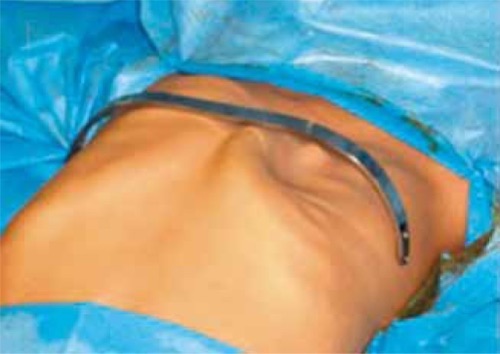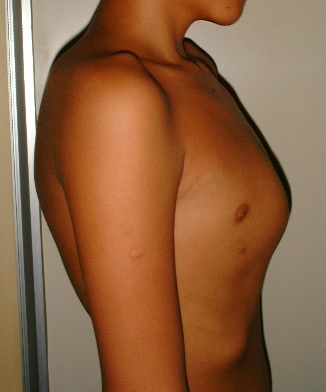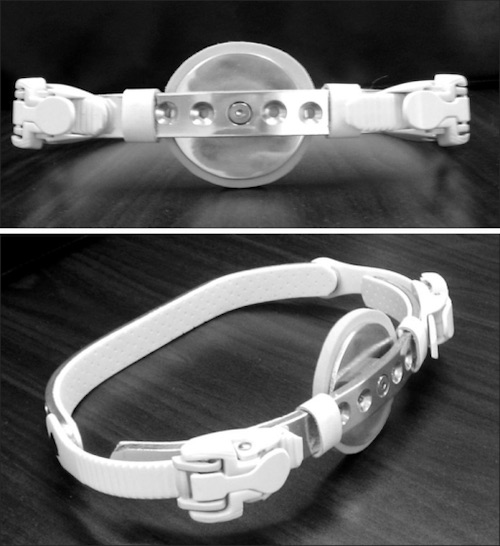Pediatric Surgery: Chest Wall Deformity
Pectus Excavatum (Funnel Chest)
Basics
- Posterior Depression of the Sternum & Lower Costal Cartilage
- Most Common Anterior Chest Wall Malformation (90%)
- More Common in Males
- Often Noted in First Years of Life
- “Growing Out Of” is Rare & May Worsen
Presentation
- Generally Well Tolerated
- May Cause Pain or Exercise Intolerance
- A Large Portion Have Emotional Distress
- Body Image Concerns May Cause Depression
- May Impair Cardiopulmonary Function – Debated
Treatment
- Indications for Surgical Repair:
- At Least Two of:
- Symptomatic (Emotional Distress) or Progressive
- Restrictive Disease on PFT’s
- Pectus Severity Index (PSI) > 3.25
- CT – Ratio of Lateral Diameter of Chest to the Distance Between Sternum & Spine
- Cardiac Abnormalities (MVP, Compression, Displacement, Bundle Branch Block)
- Failed Prior Repair
- At Least Two of:
- Age to Repair: 10-15 Years (Pubertal Growth Spurt – Costal Cartilage Still Compliant But Lower Risk of Recurrence)
- Improves: MVP, Not Lung Volumes
Surgical Procedures
- Nuss Procedure (Minimally Invasive)
- Generally the Preferred Procedure
- Procedure: Pass A Stainless-Steel Bar Through the Anterior Mediastinum to Stabilize
- Typically Removed After a Few Years
- If Metal Allergy:
- Preoperatively: Use Titanium (Less Malleable & More Expensive)
- Postoperatively: Steroids
- If Malpositioned or Moves: Reposition & Stabilize Bar
- Ravitch Procedure (Open)
- Procedure:
- Resect Abnormal Subperichondrial Cartilage
- Sternal Osteotomy to Reposition
- Internal Fixation with Retrosternal Strut
- If Sternum Angled/Superior Cartilage Protruding
- Procedure:

Pectus Excavatum 1

Nuss Procedure 2

Nuss Procedure 3
Pectus Carinatum (Pigeon Chest)
Basics
- Sternum Protrudes Forward
- More Common in Males
- Most Often Present After Age 11
- Often Worsens During Pubertal Growth Spurt
Types
- Chondrogladiolar Prominence
- Most Common
- Middle & Lower Portions Protrude Forward
- Chondromanubrial Prominence
- Upper Portion Protrudes Forward
- Body is Deviated Posteriorly
- Lower Portion Protrudes Forward
- Characteristic Z-Shape on Lateral View
Presentation
- Generally Asymptomatic
- May Cause Pain or Exercise Intolerance
- A Large Portion Have Emotional Distress
- Body Image Concerns May Cause Depression
Treatment
- Primary Tx: Bracing
- Indications:
- Emotional Distress
- Respiratory Symptoms
- 65-80% Success Rates
- Generally Required for 4-8 Months
- High Noncompliance with Therapy
- Indications:
- If Severe or Unable to Tolerate Bracing: Open Ravitch Procedure
- *See Pectus Excavatum

Pectus Carinatum 4

Pectus Carinatum Brace 5
References
- Ahellwig. Wikimedia Commons. (License: CC BY-SA-3.0)
- Koizumi T, Mitsukawa N, Saiga A, Satoh K. Clinical application of Nuss procedure for chest wall deformity in Poland syndrome. Kardiochir Torakochirurgia Pol. 2014 Dec;11(4):421-3. (License: CC BY-NC-ND-3.0)
- Zhong W, Ye J, Liu J, Zhang C, Zhao M. Numerical Simulation and Clinical Verification of the Minimally Invasive Repair of Pectus Excavatum. Open Biomed Eng J. 2014 Dec 31;8:147-52. (License: CC BY-NC-3.0)
- Jprealini. Wikimedia Commons. (License: CC BY-SA-4.0)
- Jung J, Chung SH, Cho JK, Park SJ, Choi H, Lee S. Brace compression for treatment of pectus carinatum. Korean J Thorac Cardiovasc Surg. 2012 Dec;45(6):396-400. (License: CC BY-NC-3.0)